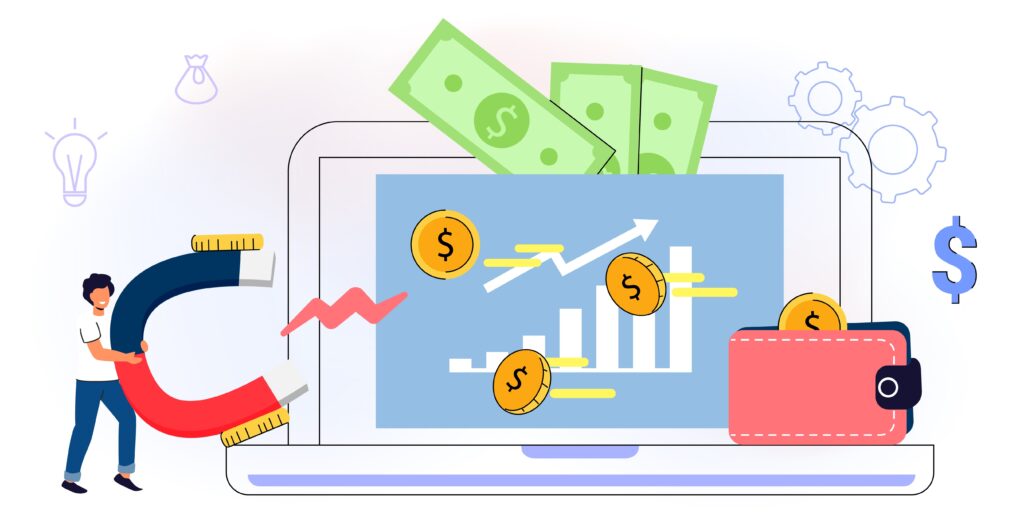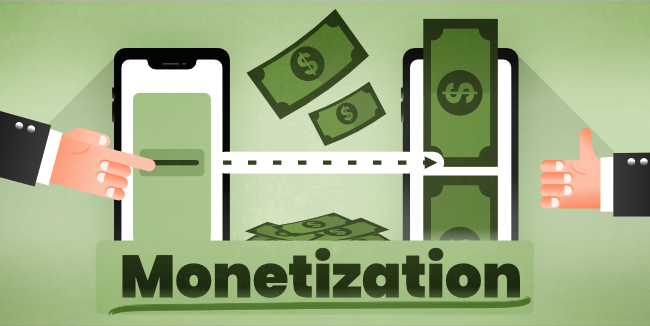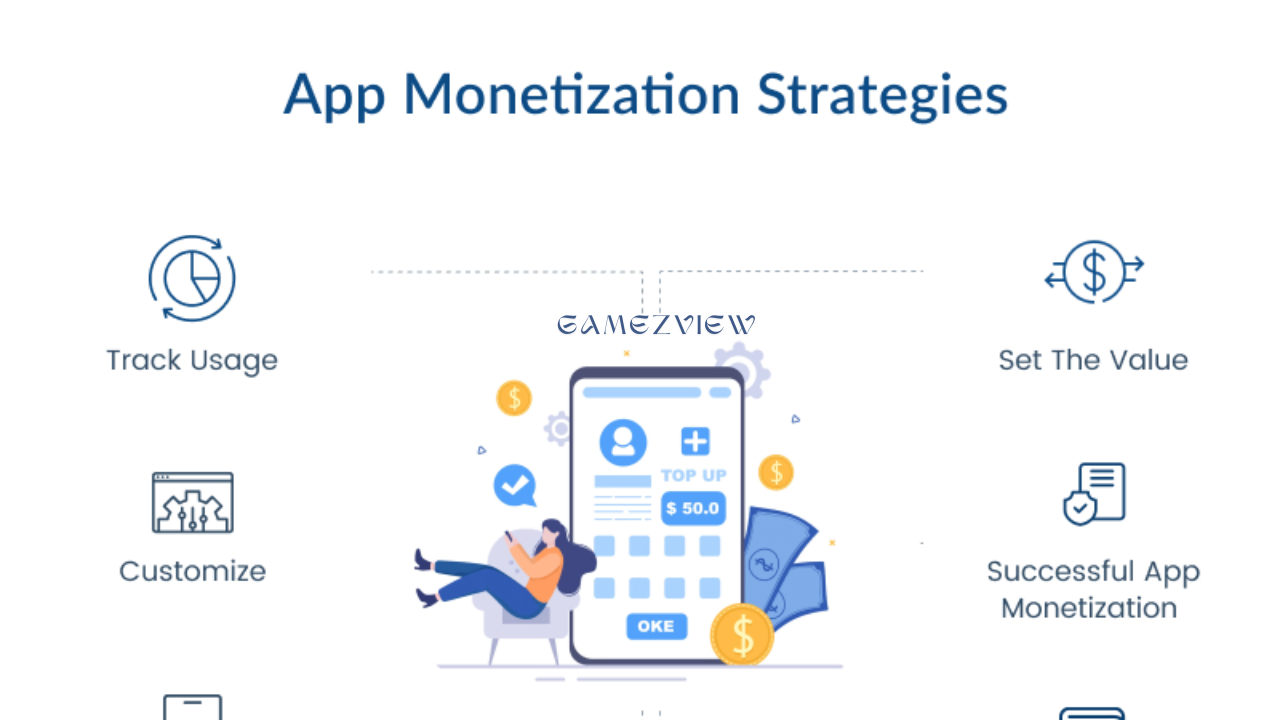The mobile gaming industry has exploded in recent years, with millions of games available across various platforms. As competition grows, developers must explore diverse monetization strategies to ensure profitability. This comprehensive guide delves into various monetization strategies for mobile games, including in-app purchases, advertisements, subscriptions, and more.
Introduction to Mobile Game Monetization
Monetizing mobile games involves generating revenue from a game that users download and play. Unlike traditional console or PC games that often rely on upfront payments, mobile games primarily employ strategies that allow developers to earn money through user engagement. These strategies must be carefully designed to balance user experience with revenue generation, ensuring that players remain engaged while providing revenue opportunities for developers.
1. In-app purchases (IAPs)
What are In-App Purchases?
In-app purchases are transactions made within a mobile game that allows players to buy virtual goods or enhancements. These purchases can range from cosmetic items, such as skins and costumes, to gameplay advantages, such as power-ups or additional levels.
Types of In-App Purchases
- Consumables: These are items that players use up over time, such as virtual currency or boosters. They provide temporary benefits and encourage players to make repeat purchases. Examples include extra lives or game currency.
- Non-consumables: These purchases are permanent and include items that players buy once and keep forever. Examples are premium characters or permanent game upgrades.
- Subscriptions: Players pay a recurring fee for continuous access to premium features or benefits. Subscriptions can be weekly, monthly, or yearly and often offer exclusive content or advantages.
Designing Effective IAPs
- Value Proposition: Ensure that the items or benefits offered through IAPs provide value to the players and enhance their gaming experience. Avoid pay-to-win scenarios that may alienate non-paying players.
- Pricing Strategy: Set prices based on player demographics and spending habits. Implement tiered pricing to cater to different budgets.
- FOMO (Fear of Missing Out): Create limited-time offers or exclusive items to encourage players to make purchases. Limited availability can drive urgency and increase sales.
- Transparency: Communicate the benefits and costs of in-app purchases to avoid player frustration. Misleading pricing can lead to negative reviews and reduced user trust.

2. Advertising
Types of In-Game Advertising
- Interstitial Ads: These full-screen ads appear at natural transition points in the game, such as between levels. They are effective due to their visibility but should be used sparingly to avoid disrupting gameplay.
- Rewarded Ads: Players choose to watch ads in exchange for in-game rewards, such as currency or boosters. This voluntary interaction often leads to higher engagement and player satisfaction.
- Banner Ads: These smaller ads are displayed at the top or bottom of the screen. They are less intrusive but may have lower engagement rates compared to interstitial or rewarded ads.
- Native Ads: These ads blend seamlessly with the game’s content, providing a more integrated advertising experience. They can improve user experience by matching the game’s aesthetic and tone.
Optimizing Ad Revenue
- Ad Placement: Strategically place ads to minimize disruption while maximizing visibility. Avoid placing ads during critical gameplay moments to maintain player engagement.
- Frequency Cap: Set limits on how often ads are shown to avoid overwhelming players. Balancing ad frequency with player experience is crucial for maintaining satisfaction.
- Ad Quality: Partner with reputable ad networks that offer high-quality ads. Low-quality or irrelevant ads can lead to poor user experiences and decreased revenue.
- Analytics: Use analytics to track ad performance and user interactions. This data can help optimize ad placement and format, increasing overall revenue.
Defining Target Audience and Understanding Their Preferences
3. Subscriptions
What Are Subscriptions?
Subscriptions involve players paying a recurring fee for access to premium features or exclusive content. They provide a steady revenue stream and can enhance player retention.
Benefits of Subscription Models
- Predictable Revenue: Subscriptions offer consistent and predictable income, which can be more stable than one-time purchases or ad revenue.
- Player Loyalty: Offering ongoing benefits or content can enhance player loyalty and encourage long-term engagement.
- Exclusive Content: Subscribers often gain access to exclusive content or features not available to non-paying users, providing added value.
Designing a Successful Subscription Model
- Freemium Approach: Offer a free version of the game with limited features and a premium subscription with enhanced content. This allows players to experience the game before committing to a subscription.
- Tiered Subscriptions: Provide multiple subscription tiers with varying levels of benefits. This caters to different player preferences and budgets.
- Free Trials: Offer free trial periods for new subscribers to experience premium features before committing to a paid subscription. Trials can increase conversion rates and attract more subscribers.
4. Premium Upfront Purchases
What Are Premium Upfront Purchases?
Premium upfront purchases involve charging players a one-time fee to download and access the game. This model is less common in mobile games but can be effective for certain types of games, such as high-quality RPGs or strategy games.
Advantages and Disadvantages
- Advantages: Provides immediate revenue upon purchase and eliminates the need for ongoing monetization strategies. It also avoids potential issues with ad fatigue or intrusive IAPs.
- Disadvantages: May limit the game’s reach due to the upfront cost. Players may be hesitant to pay for a game without experiencing it first, which can affect downloads and overall revenue.
Maximizing Revenue with Premium Purchases
- High-Quality Content: Ensure that the game offers significant value and high-quality content to justify the upfront cost. Players are more likely to pay for a game that provides a rich and engaging experience.
- Demo or Trial Versions: Offer a free demo or trial version of the game to give players a taste of what they can expect. This can help overcome resistance to the upfront cost and increase conversion rates.
5. Sponsorships and Partnerships
What Are Sponsorships and Partnerships?
Sponsorships and partnerships involve collaborating with brands or companies to integrate their products or services into the game. This can include branded content, in-game events, or co-marketing campaigns.
Benefits of Sponsorships and Partnerships
- Additional Revenue: Partnerships can provide an additional revenue stream through sponsorship deals or co-branded content.
- Increased Visibility: Partnering with well-known brands can increase the game’s visibility and attract new players.
- Enhanced Content: Collaborating with brands can lead to unique and engaging in-game content, such as special events or exclusive items.
Implementing Effective Sponsorships
- Choose Relevant Partners: Partner with brands that align with the game’s target audience and theme. Relevant sponsorships are more likely to resonate with players and enhance their experience.
- Integrate Seamlessly: Ensure that sponsored content or branding is integrated smoothly into the game. Invasive or poorly executed partnerships can disrupt gameplay and negatively impact player satisfaction.
- Measure Impact: Track the performance of sponsorships and partnerships to evaluate their effectiveness. Use metrics such as player engagement, revenue impact, and brand awareness to assess success.

6. Crowdfunding and Pre-Orders
What Are Crowdfunding and Pre-Orders?
Crowdfunding involves raising funds from a large number of people, typically through platforms like Kickstarter or Indiegogo, to support the development of a game. Pre-orders allow players to pay for a game before it is officially released.
Advantages and Disadvantages
- Advantages: Crowdfunding and pre-orders can provide upfront funding to support development and generate early interest in the game. They also create a sense of anticipation and commitment among players.
- Disadvantages: These methods require effective marketing and community engagement to succeed. There is also a risk of not reaching funding goals or failing to deliver on promises, which can damage the game’s reputation.
Best Practices for Crowdfunding and Pre-Orders
- Engage with the Community: Build a strong community around the game through social media, forums, and updates. Engage with potential backers or pre-order customers to generate excitement and support.
- Offer Attractive Rewards: Provide compelling rewards for backers or pre-order customers, such as exclusive content, early access, or limited-edition items.
- Be Transparent: Communicate clearly about the development process, funding goals, and any potential risks. Transparency builds trust and helps manage expectations.
Future Predictions for the Mobile Gaming Market: What Lies Ahead
7. Merchandising
What Is Merchandising?
Merchandising involves selling physical products related to the game, such as apparel, posters, or collectables. It extends the game’s brand beyond the digital realm and provides additional revenue opportunities.
Benefits of Merchandising
- Brand Expansion: Merchandise can help expand the game’s brand and increase visibility. It also allows fans to express their support for the game through physical products.
- Additional Revenue: Merchandising provides a supplementary revenue stream and can boost overall profitability.
Implementing a Successful Merchandising Strategy
- Identify Popular Items: Offer merchandise that resonates with the game’s audience. Popular items include branded apparel, collectables, and artwork.
- Quality Control: Ensure that merchandise is of high quality and accurately represents the game’s brand. Poor-quality products can negatively impact the game’s reputation.
- E-Commerce Integration: Set up an online store or integrate merchandise sales into the game’s app or website. This makes it easy for players to purchase and enhances the overall experience.
Effective monetization strategies are crucial for the success of mobile games. By leveraging in-app purchases, advertisements, subscriptions, and other methods, developers can generate revenue while providing an engaging experience for players. Each strategy has its advantages and challenges, and the best approach often involves a combination of different methods tailored to the game’s audience and design.

As the mobile gaming industry continues to evolve, staying informed about emerging trends and player preferences will be essential for maximizing revenue and ensuring long-term success. By carefully designing and implementing monetization strategies, developers can achieve a balance between profitability and player satisfaction, paving the way for a thriving and sustainable gaming business.




